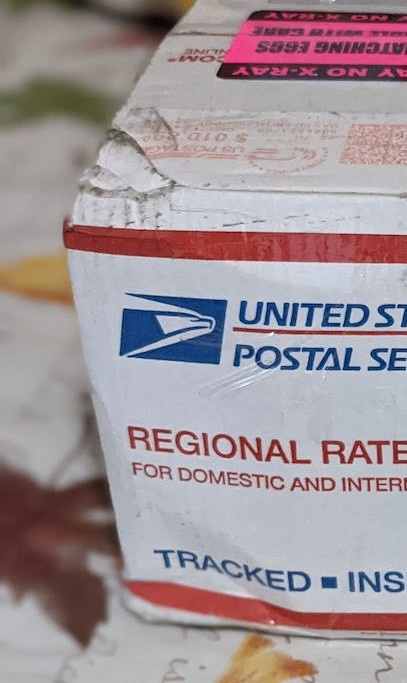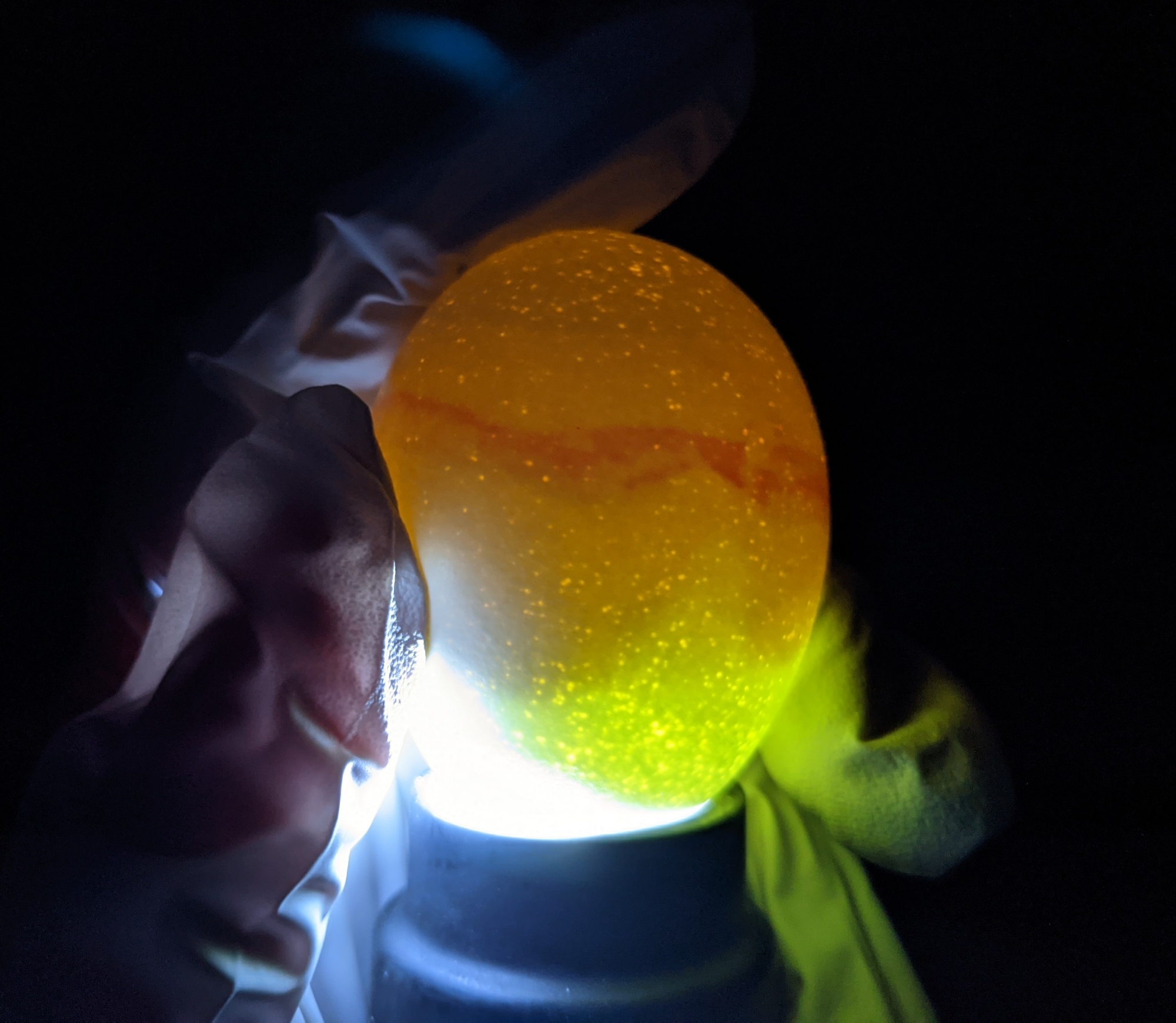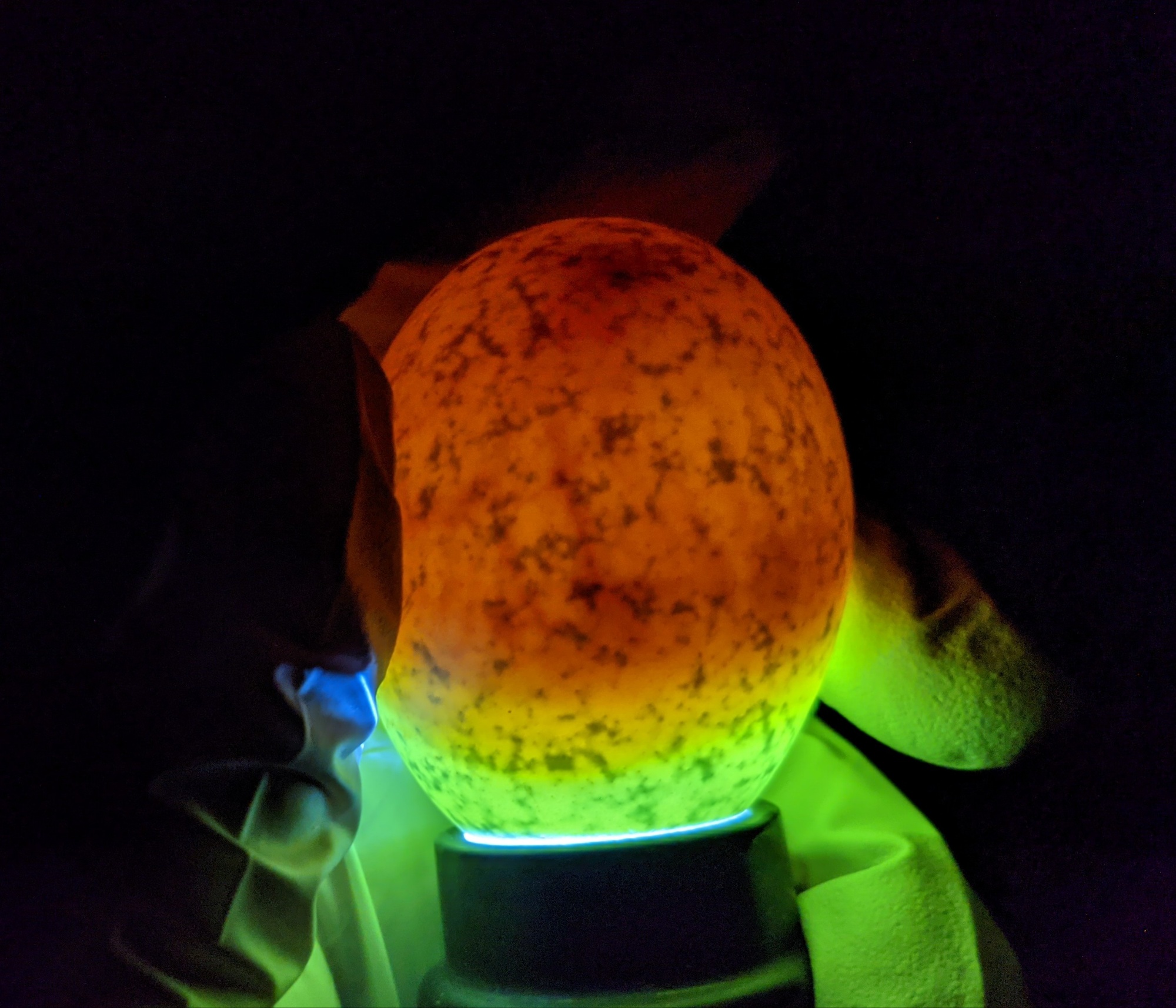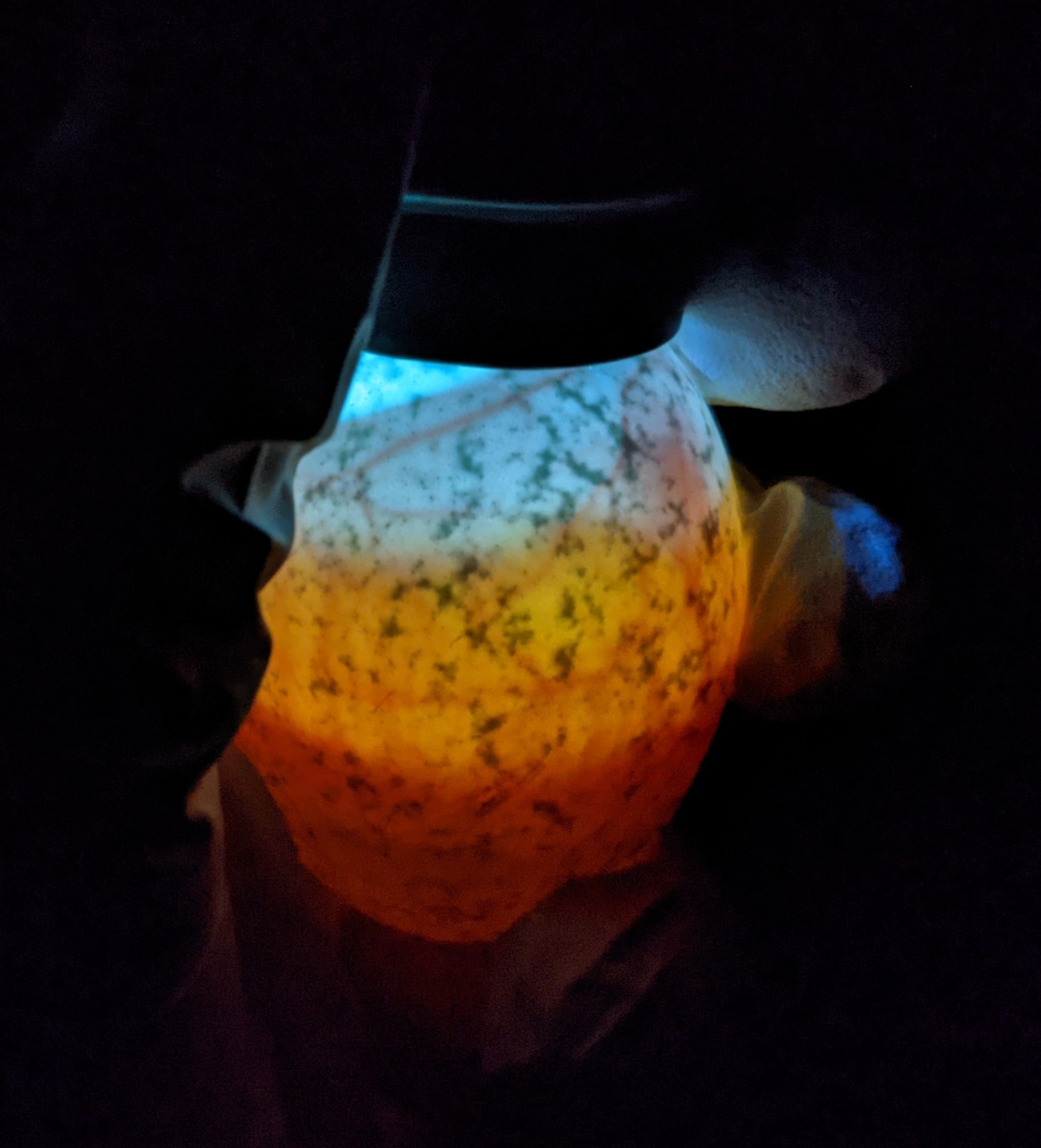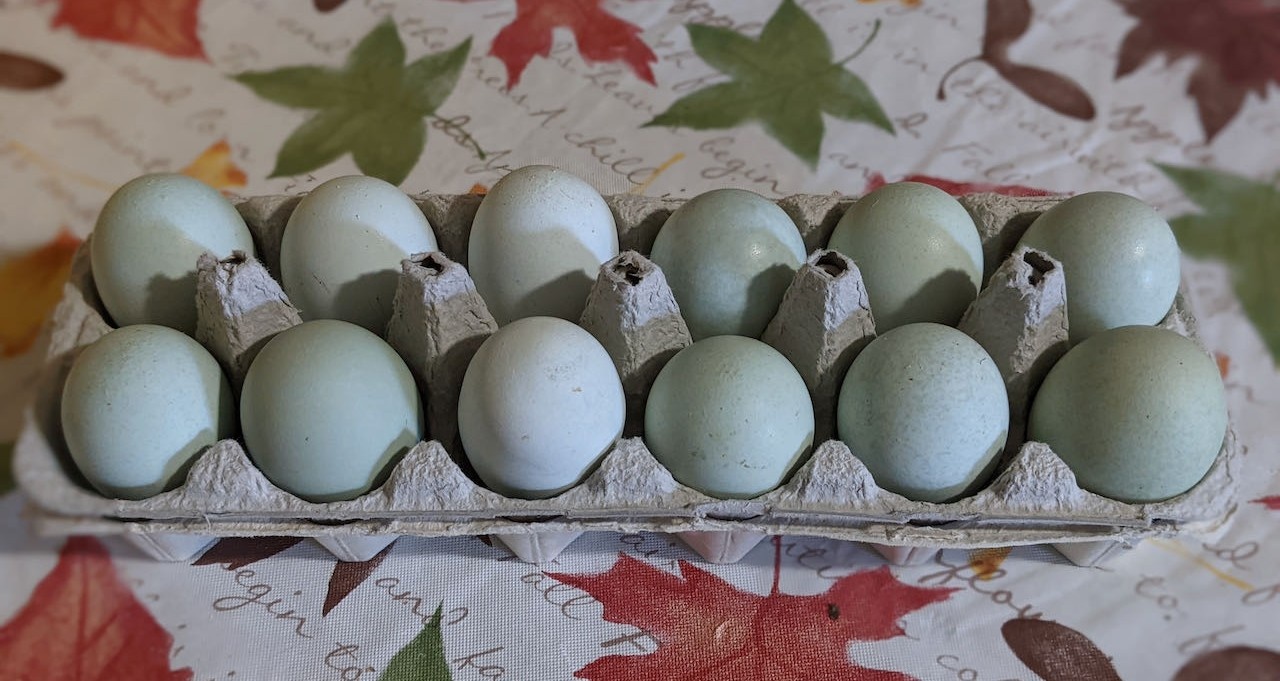
After receiving the shipped eggs for Lavender Ameraucana hatch #2, I knew the odds were against getting chicks to hatch from that terribly damaged group…and it seems I was right. Being determined to build a flock of these lovely birds, I had already ordered another set of hatching eggs from the same breeder and this year’s hopes rest squarely on group #3.
After candling hatch #2, my fears were confirmed: the delayed, rough shipping had scrambled the eggs and ruined any chance of development. Only 1 showed veining, and it looks like it stopped early on. This isn’t unusual for shipped eggs, particularly those that arrive with detached air cells and weird-looking yolks.
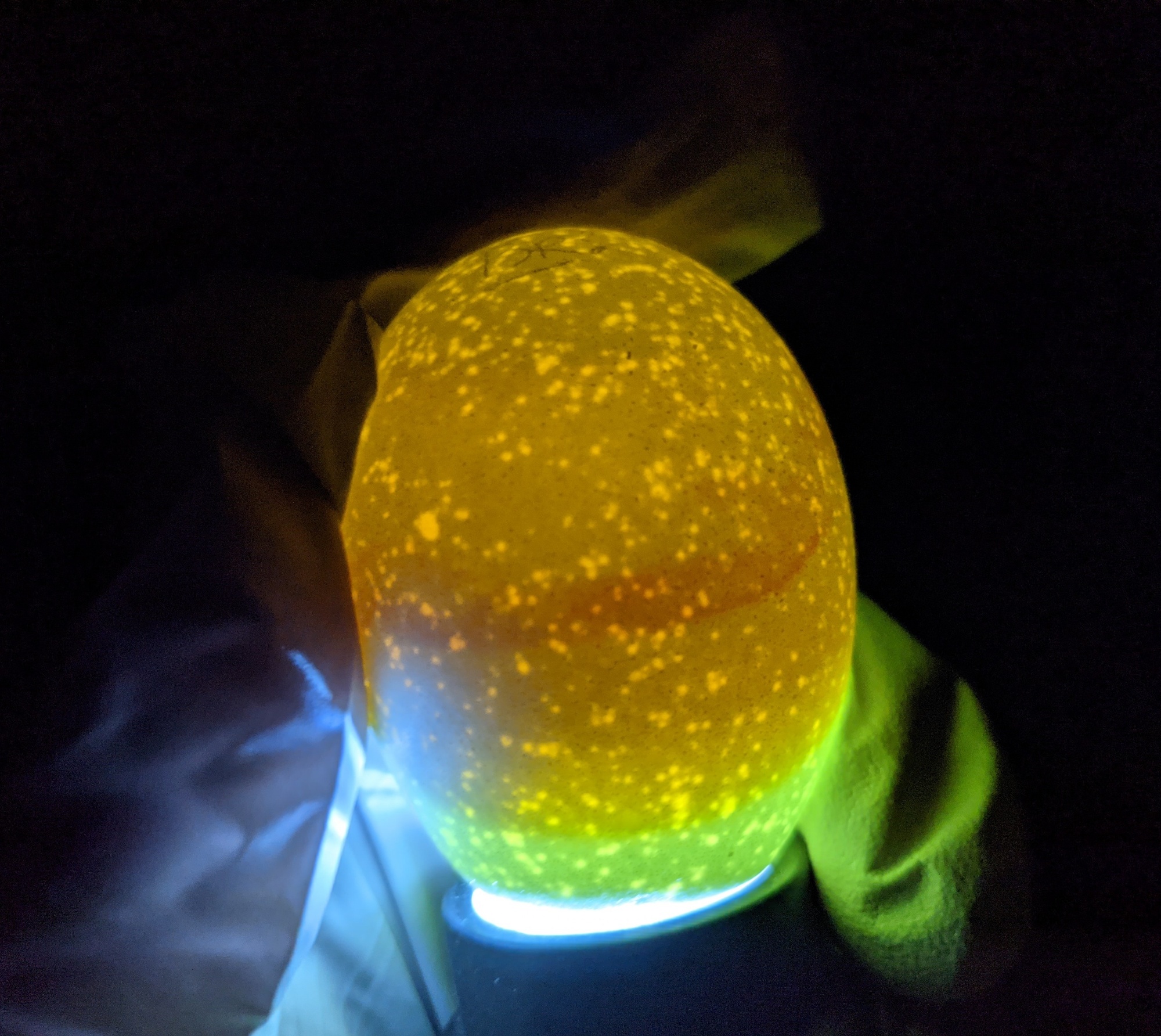
Hatch #3 was as much about seeing if USPS would do the same circuitous routing of the package as they had last time as it was about hoping to get eggs that weren’t damaged. This time, the eggs arrived two days earlier (which is good), but the box was obviously damaged, and, once again, it had been flown from a neighboring state.
Upon opening the box (with trepidation, half expecting to find a mess of broken eggs), the eggs appeared to be unbroken, and there was no visible moisture on them (unlike the last group). When I candled them, however, the damage from shipping was apparent: detached and rolling air cells, likely yolk scrambling. So frustrating!
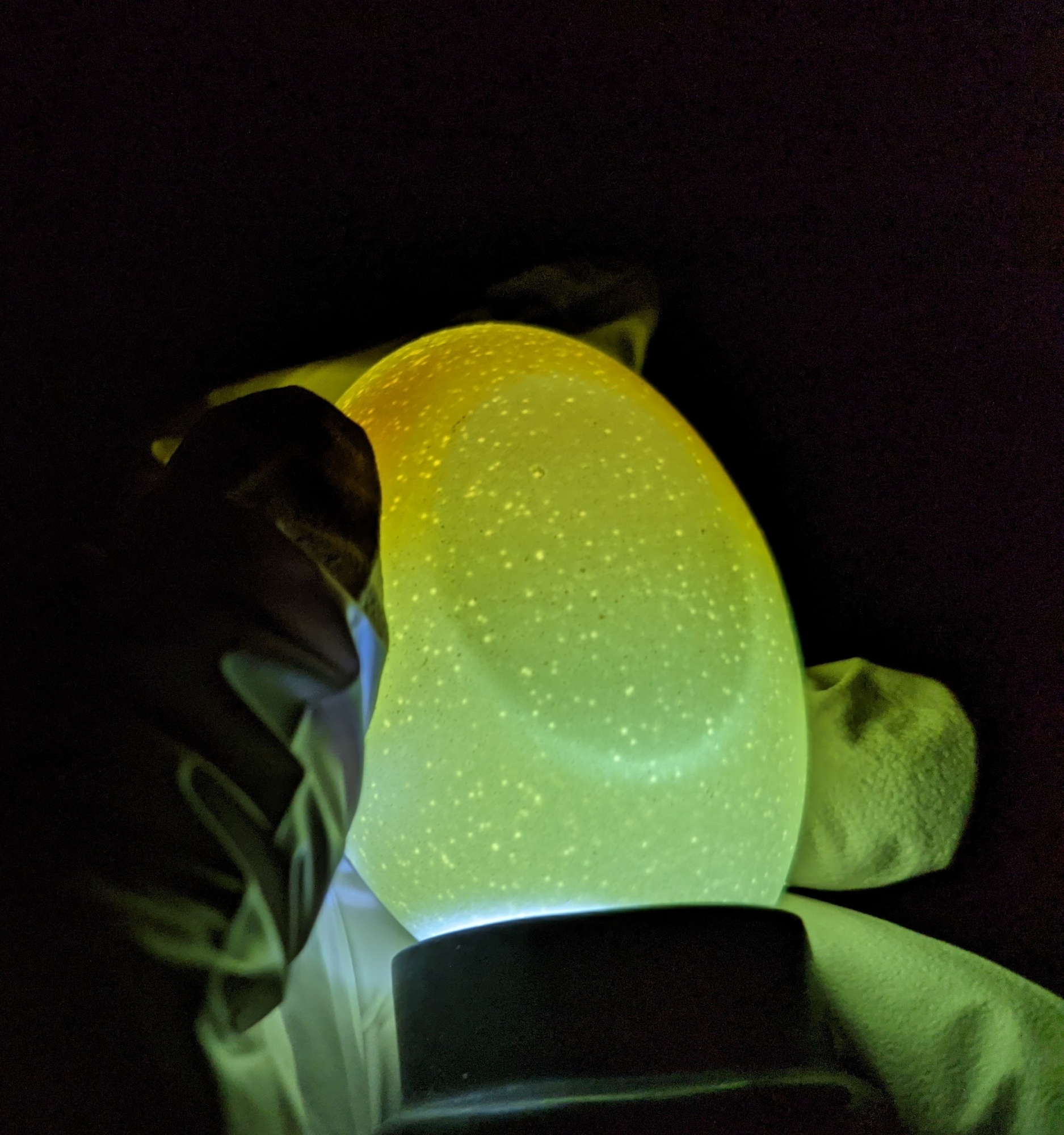
Like group #2, I let them rest before placing them into the incubator, then left them to incubate for 72 hours before moving them onto an automatic turner. I have yet – despite trying recommended techniques such as partially hand-turning eggs and incubating them upright throughout – to see air cells return to their normal positions, and I’m not expecting to see that with these, either. I am, however, prepared to make safety holes and help extricate hatchlings as needed (and shipping-damaged eggs often require hatching assistance).
A week has now passed since I set the eggs in the incubator, and it was time to do the first candling. Though a couple of eggs had tried to develop, they quit early on (blood ring).
Disappointingly, the majority of the eggs did not develop at all. I’ve found that eggs with completely detached (rolling) air cells tend to be unlikely to develop, particularly when accompanied by cloudy, irregularly-shaped yolks (suggestive of “scrambling”).
Just two eggs appear to be developing normally, and a third has what looks like some active, but odd, veining. While I left that last one in, I’m guessing that it may quit before the next candling.
Once again, these shipped eggs are looking like a bust, even though they weren’t delayed in transit – the extremely rough handling destroyed their chances of hatching (and that’s assuming the eggs were still within the window of viability and not excessively old when shipped and that they were fertilized to begin with).
This will be my last attempt of the year for this breed and I know that, realistically, the chances aren’t good that the remaining few will go the distance. Now that I’ve had two sets of eggs come from the same breeder, I also know not to order shipped eggs from that state in the future because of how USPS handles the eggs (I had a similar issue with two hatching egg orders from a state that’s just slightly southeast of my location, too – but the shipments arrived with several broken eggs both times).
One more bit of news: the only chick from the first Lavender Ameraucana hatch of the year (and from a different breeder) is looking like a cockerel, rather than a pullet. Of course.
Aren’t shipped eggs fun? Actually, they used to be – but with the “improvements” made to our postal service in the past few years, they’ve become a complete crapshoot. Misrouting, rough handling, delays…none of those are helpful when the contents of the packages are perishable, fragile, fertile eggs. Come to think of it, what kind of shipment benefits from those issues?
Stay tuned to find out how this batch does at candling #2.

